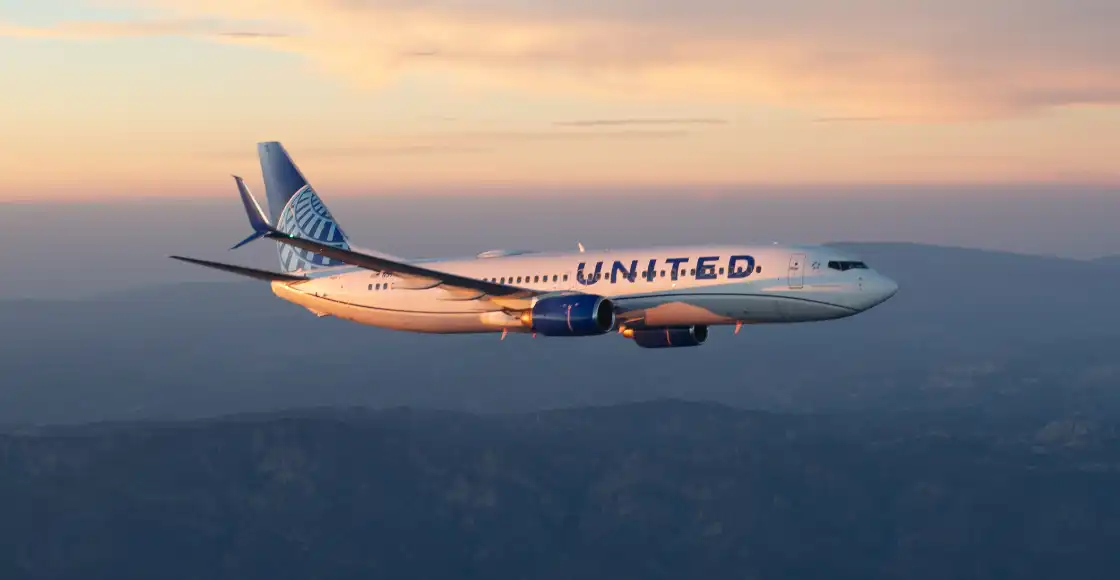Is Your Dream To Become a Pilot?
The possibilities are endless. As a pilot you will operate the controls of an aircraft – which can be anything from a hang glider or balloon to a commercial airliner or fighter jet — and everything in between. Even spacecraft need pilots!
As a pilot you may decide to:
-
Fly in the military and serve your country;
-
Carry passengers safely for major carriers like United Airlines (the official airline of AeroEducate);
-
Transport VIPs and executives for big companies or famous people as a corporate pilot;
-
Fly recreational or aerobatic aircraft just for the fun of it.
And that's just the beginning of where you could take your career as a pilot. Read on to find out more about different career paths.
Why Piloting as a Career?
Fun Piloting Facts
An aircraft takes off or lands every 37 seconds at the O'Hare International Airport in Chicago.
A commercial aircraft flies at an average speed of 500 miles per hour.
There are about 466,000 active pilot certificates in the U.S., or less than 2 percent of the U.S. population.
Air travel is the second safest form of transportation. Only the elevator/escalator is safer.
An airline ticket in the 1920s cost just $5. That’s the equivalent of $75 today.
It took just 66 years to go from the Wright brothers' first flight to people landing on the moon.
The fastest aircraft in the world, the Lockheed SR-71 Blackbird, once flew coast-to-coast across the U.S. in one hour and eight minutes. That same trip could take six months by covered wagon, just 100 years earlier.
The Wright brothers' first successful powered flight in 1903 spanned a distance of 120 feet, which is less than the length of a Boeing 787 airliner.
About 10 percent of all general aviation aircraft flying in the U.S. are homebuilts.
Is Being a Pilot for You?
If you can say "yes” to any of the following questions, becoming a pilot could be a good career fit for you.
Do you love the idea of soaring above the clouds?
Are you a logical decision maker and problem solver?
Are you looking for an unbeatable office view from a cockpit and not a cubicle?
Do you want a dynamic work environment where no two days are alike?
Are you able to stay cool and calm under pressure?
Do you think it would be awesome to have unbeatable travel benefits?
Explore Piloting Careers
With so many career options available for pilots, the sky really isn't even the limit. (Even spacecraft need pilots!) Explore these piloting pathways to see where a career as a pilot could take you.
Are you interested in being a pilot? Create your free AeroEducate account to learn more.
Debunking the Myths

#1 MYTH
"Becoming a pilot is too expensive."
Figuring out how to finance your dreams can be overwhelming, and for many of us, it can quickly put a halt to pursuing them. Don’t let your fear of the unknown costs deter you. Earning scholarships is a great way to reduce the cost of flight training and there are several scholarship opportunities available. In addition to scholarships and student loans available, some employers like the armed forces may actually pay for your training. Find out more about scholarships ›

#6 MYTH
"I need to have perfect vision to fly a plane."
While the standard in the military varies between each service branch they all allow entry into flight school with some vision impairment if it can be corrected to 20/20. Flying in all other industries or for fun requires a corrected vision of 20/40 or better.

#2 MYTH
"It's only worthwhile to earn my pilot certificate if I am pursuing a career in aviation."
Not only do you grow your communication and decision-making skills and your ability to multitask, but you’ll learn more about yourself, too. Becoming a pilot is not only fun and a great way to get involved in a passionate community, but also looks great on a résumé.

#3 MYTH
"I have to pass a medical exam if I want to get my pilot certificate."
Unlike private pilots, sport pilots don't need to obtain a medical certificate. As long as you have a valid U.S. driver's license you can start your pilot journey. In addition, ultralight pilots don’t need a certificate or license of any kind.

#5 MYTH
"I am too tall or too short to fly an airplane."
While there are some restrictions around height in the military there are no restrictions on how tall or short a person needs to be in order to fly for an airline, or, just for fun!

#4 MYTH
"I have to be good at math."
While math certainly has an important role in flight, you do not need to be a math whiz to become a pilot. This is not to say that you don’t need to know basic mathematics, but no one is going to hand you an advanced calculus quiz while you're flying.
Inspiring Piloting Testimonials
Letting your dreams take flight is easier than you think — we can help.
Developed in Cooperation with United Airlines
AeroEducate was developed with support from United Airlines, the official airline of AeroEducate and Young Eagles. United Airlines' commitment to providing educational activities, a clear pathway to becoming a pilot through their Aviate program, and countless other contributions has helped make AeroEducate possible. See all the exciting things going on with United Airlines and its involvement with AeroEducate below.




